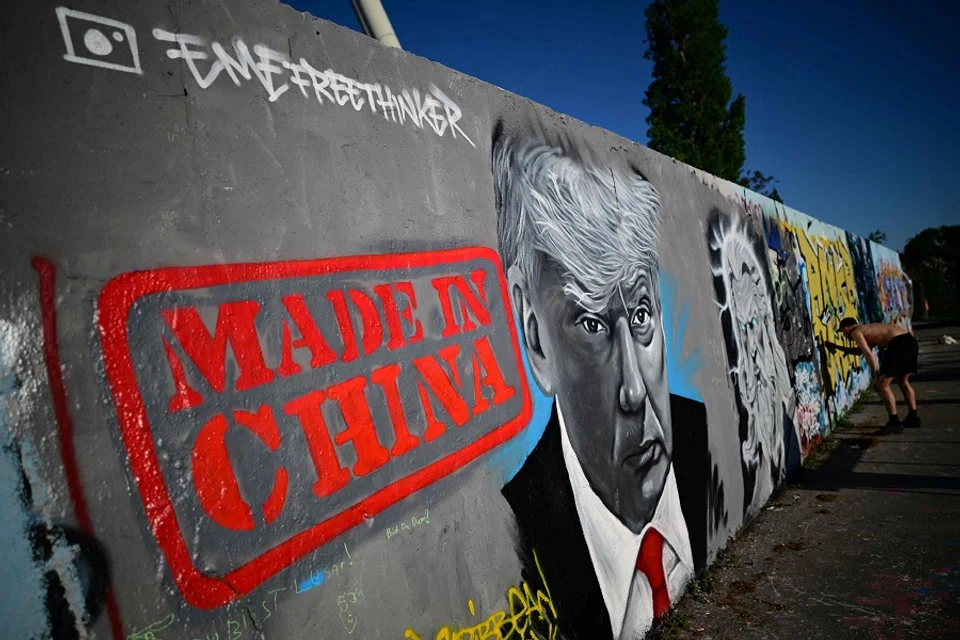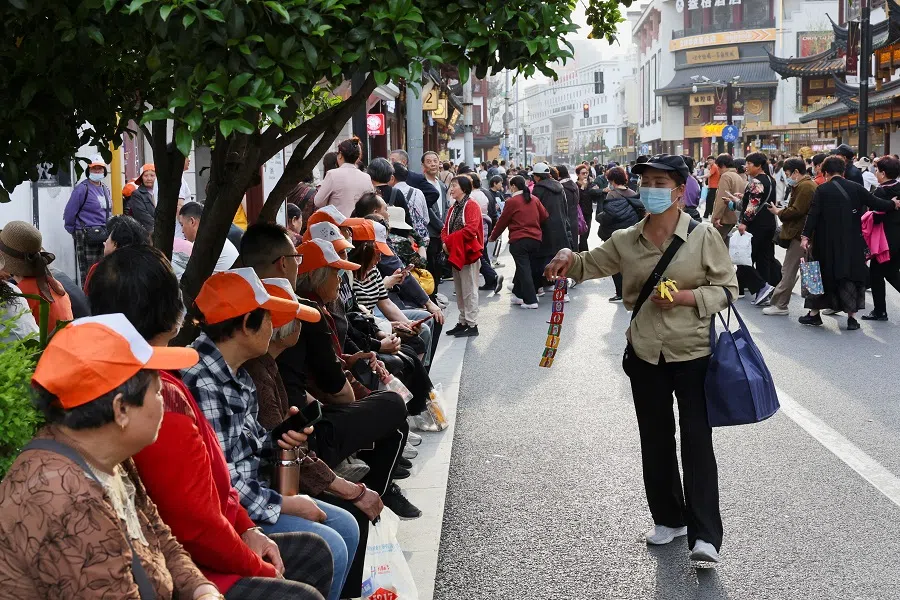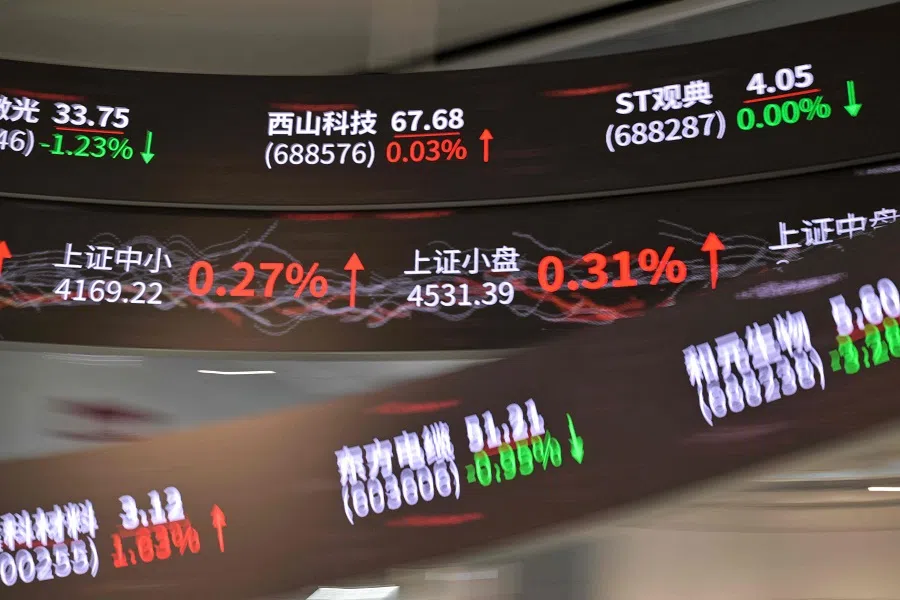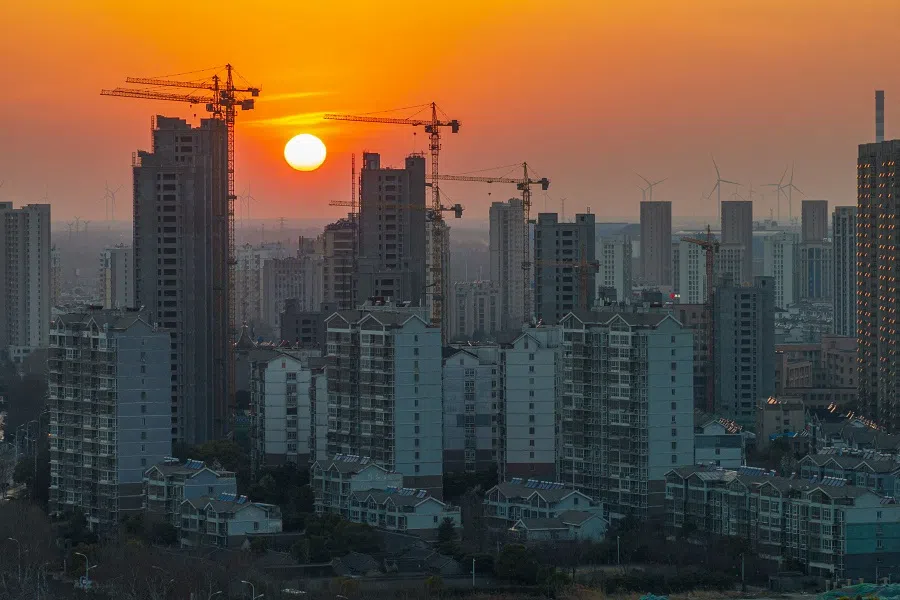China’s deflationary trap: Can Beijing fix its broken economic model?
Trump’s tariffs intensify China’s deflation crisis, exposing structural flaws. Real solutions demand wage growth, affordable housing, stronger safety nets and fairer wealth distribution. This pressure may finally force the economic overhaul China needs to escape the “middle-income trap” illusion. Economist Chen Kang looks at the issue.

US President Donald Trump’s so-called global “reciprocal tariffs” have severely impacted the system of global trade, disrupted global value and supply chains, and damaged the world economy. In view of this, the International Monetary Fund (IMF) recently lowered its forecast for global economic growth in 2025 from 3.3% to 2.8%.
Trump’s tariffs hurt others without any gain for the US. Across-the-board tariff increases have created a supply shock for the American economy, much like the oil crises of the 1970s, leading simultaneously to inflation and economic stagnation. How the current situation evolves will depend largely on the checks and balances in the US. This article focuses only on the short- and medium-term impacts of Trump’s tariffs on China’s economy.
On the brink of deflation
Recently, the IMF and several investment banks forecasted that Trump’s tariffs would lower China’s GDP growth rate in 2025 by about 0.6%. If the US-China negotiations fail, if the US cancels tariff exemptions on semiconductor products, or if other countries raise tariffs on Chinese goods under US pressure, the outcome could be much worse. Conversely, if Trump yields to domestic political pressure and significantly reduces tariffs, the impact might be less severe.
China’s GDP growth rate has hovered around 5% in recent years. Judging solely from the 0.6% figure, China seemingly has the capacity to withstand this tariff war. However, over time, producers of raw materials and intermediate goods for export industries will suffer. Business closures and rising unemployment will depress incomes and consumption, leading to long-term economic damage.
The simultaneous fall of both PPI and CPI clearly indicated a deflationary environment.

Moreover, Trump’s tariffs come at a difficult moment for China’s economy. Amid a real estate downturn, post-pandemic recovery has been sluggish. The Producer Price Index (PPI) fell by 3% in 2023, 2.2% in 2024, and by another 2.4% in the first quarter of 2025, continuing a sustained two-and-a-half-year decline. Meanwhile, the Consumer Price Index (CPI) rose only 0.2% during the same period, with negative values recorded in the second half of 2023 and in February and March 2025. With China’s economy currently on the brink of deflation, the Trump tariffs may be the final push that sends it into deflation.
Such economic conditions have been rare for China in the past 40 years; only the period of deflation from 1998–2002 compares. During those five years, China’s PPI growth rates were -4.1%, -2.4%, 2.8%, -1.3%, and -2.2%, while CPI growth rates were -0.8%, -1.4%, 0.4%, 0.7%, and -0.8%. The simultaneous fall of both PPI and CPI clearly indicated a deflationary environment.
Then and now: Government policies and external environments
Comparing these two periods reveals many similarities. First, macroeconomic growth in both eras was constrained by a series of policy measures. In the earlier period, contractionary policies implemented since 1993 to curb inflation continued through 1997; the 1994 tax reform strained county and township finances, prompting excessive levies on rural populations and suppressing rural consumption; and the reforms of 1997 to restructure major state-owned enterprises (SOEs) while relaxing control over the smaller ones (抓大放小) led to massive layoffs, slowing urban income growth and dampening consumer confidence.
In the latter period, the “regulatory storm” beginning in 2020 targeted industries including real estate, internet platforms, education, and entertainment, which collectively dealt a severe blow to business confidence. The prolonged dynamic “zero-Covid” policies delayed normalisation of the economy, forcing supply chains to relocate overseas and exacerbating firm closures, job losses, income declines, and suppressed consumer demand.
... macroeconomic policies in both periods were constrained and struggled to effectively boost the economy.
Second, both periods were hit by adverse external environments. The earlier period saw external demand collapse following the 1997 Asian Financial Crisis. China’s commitment not to devalue the RMB further squeezed exporters. In the current period, escalating US-China tensions and a deepening trade war have reinforced expectations of economic decoupling, accelerated global supply chain restructuring, and increased uncertainty for Chinese exports.
Third, macroeconomic policies in both periods were constrained and struggled to effectively boost the economy. China’’s economic system has not fully shed the influence of its roots of a planned economy. Macroeconomic policy tools often require administrative intervention to function. On the one hand, local governments, plagued by an insatiable “investment hunger”, maintain chronically expansionary fiscal policies, while a significant fiscal expansion requires additional support from state banks and central administrative policies, as seen during the 2009 stimulus.

On the other hand, monetary expansion only works when supported by local governments and SOEs because state banks extend large loans primarily to these state players; otherwise, liquidity merely circulates within the banking system without stimulating the real economy. It is easy to see that macroeconomic policies would be ineffective if banks and local governments receive contradictory administrative orders.
No more land bonanzas
In 1998, state-owned banks were ordered to eliminate non-performing loans, threatening dismissals for non-compliance. Banks responded by tightening credit to the extreme, undermining efforts to stimulate growth. Local governments, strapped for cash, found expansionary fiscal policy difficult to implement, leaving the central government to go it alone. Today, local government financing platforms face strict scrutiny, and performance assessments strictly limit local debt accumulation. Consequently, local governments are mostly “lying flat”, while state banks struggle to find lending targets.
In 1998, the central government issued treasury bonds to fund highway construction and other infrastructure projects. It also promoted housing market reforms, gradually introducing mortgage lending, thereby turning real estate into a major economic driver. In 1999, the government expanded university enrolments to boost domestic demand. These policies helped counteract deflationary pressures to some extent. However, true economic recovery awaited two major turning points: China’s accession to the WTO in 2001, which triggered an export and foreign investment boom, and the launch of land auctions in 2003, which facilitated local government land financing.
Although new growth drivers have emerged in sectors such as new energy, electric vehicles and artificial intelligence, they are unlikely to reverse the deflationary trend in the short term.
Since then, private and foreign enterprises have concentrated on expanding manufacturing exports and overseas markets, state-owned enterprises have maintained monopolies over upstream sectors such as energy and raw materials, and local governments have relied on “land finance” to drive real estate and infrastructure development. China’s economy has operated under this model for more than two decades.
Today, China’s risk of deflation is structurally more complex. Although it also manifests on the surface as low or negative CPI growth, prolonged PPI decline and increased reluctance to consume and invest, the current deflation involves deeper structural adjustments.

First, the real estate sector has contracted from its previous rapid expansion, which not only weakens domestic demand but also affects the local governments’ fiscal pillar. Second, the diminishing demographic dividend and the escalating ageing population are exerting concurrent pressures on both consumption and labour supply. Third, the global environment has shifted, and external demand no longer provides the strong support as before, with heightened US-China tensions. Although new growth drivers have emerged in sectors such as new energy, electric vehicles and artificial intelligence, they are unlikely to reverse the deflationary trend in the short term.
Clearly, the old growth model is no longer viable. Current policies are focusing on stimulating household consumption. However, the growth model that took shape after 2002 is itself the root cause of today’s weak consumption.
As China’s domestic private enterprises have largely remained in low-value-added assembly roles, wages have grown far more slowly than productivity, with household income remaining low in relation to GDP, suppressing consumption potential.
China’s growth engine built its own consumption trap
First, the export-oriented strategy adopted after joining the WTO has enabled China to quickly integrate into the global industries’ supply chain to become the world’s factory. Despite a large labour force entering the manufacturing sector to drive rapid economic growth, it is highly dependent on external demand, with upstream profits and value chains dominated by SOEs and multinational corporations. As China’s domestic private enterprises have largely remained in low-value-added assembly roles, wages have grown far more slowly than productivity, with household income remaining low in relation to GDP, suppressing consumption potential.
Second, while local governments’ reliance on land sales to fund infrastructure and fiscal expenditures does stimulate the economy and drive domestic demand in the short term, fundamentally it has exacerbated income and wealth inequality. Skyrocketing housing costs erode middle- and low-income groups’ consumption capacity, while returns on real estate investments far outpace returns in the real economy, concentrating wealth in property and finance and worsening income inequality.
Further, due to the prevailing dominance of land finance and infrastructure investment, more resources gravitate towards the government and enterprise sectors rather than the household sector. This development strategy has led to persistently low disposable household income, high savings, and a reluctance to spend.

This growth model has several long-term consequences. First, household consumption will lag economic growth in the long run. China’s household consumption relative to GDP fell from 47% in 2000 to 34.6% in 2010. It remains below 40% today, which is not only far lower than that in the US and developed European nations, but also below China’s own levels in the 1980s and 1990s. Such low levels of household consumption relative to GDP indicate that domestic demand can hardly be a real engine of growth.
... income inequality in China is one of the highest in the world. The concentration of capital and assets has led to a polarisation in wealth distribution, in which consumption by the middle class is limited and social stratification is entrenched.
The second consequence is structural imbalance in income distribution. The Gini coefficient, which measures income inequality, rose in China from 39.8 in 1997 to 49.1 in 2008. As it has remained high in recent years, income inequality in China is one of the highest in the world. The concentration of capital and assets has led to a polarisation in wealth distribution, in which consumption by the middle class is limited and social stratification is entrenched.
Deep structural reforms needed
The third consequence is a lack of consumer confidence and pessimistic expectations. Due to high housing prices, high education and medical costs, and the lack of social security, the people prefer to save than to spend, especially during times of economic slowdown. Therefore, the current inadequate consumption is not merely a matter of weak post-Covid recovery or cyclical downturn, but a convergence of deep structural problems, which are the after-effects of the development model of the past two decades.
To really unleash consumption potential, a deep restructuring of income distribution is needed — fundamentally increasing labour income, reducing housing and basic service costs, strengthening social security, and promoting wealth equity. Short-term stimulus measures alone will not suffice.
The so-called “middle-income trap” is more like a “middle-income illusion”. After reaching middle-income status, societies often become overconfident and trapped in utopian delusions. Hopefully, the shock of Trump’s tariffs can help shatter these illusions and catalyse genuine reforms and economic transformation.





